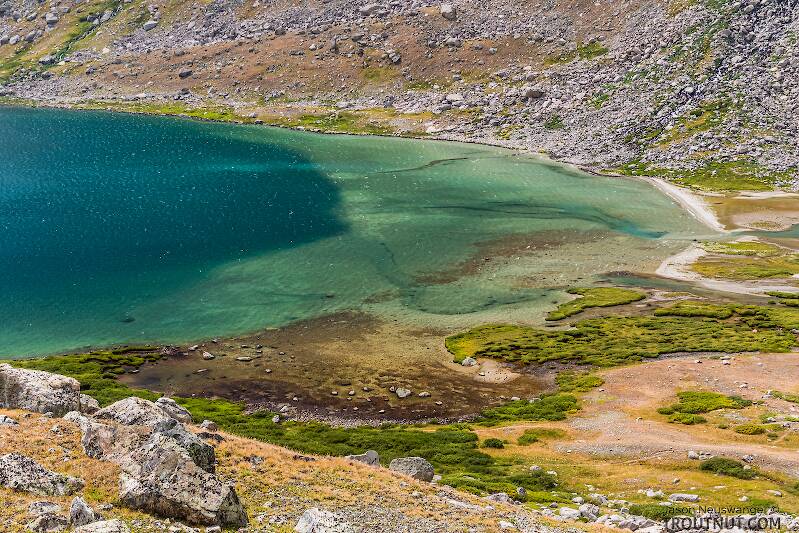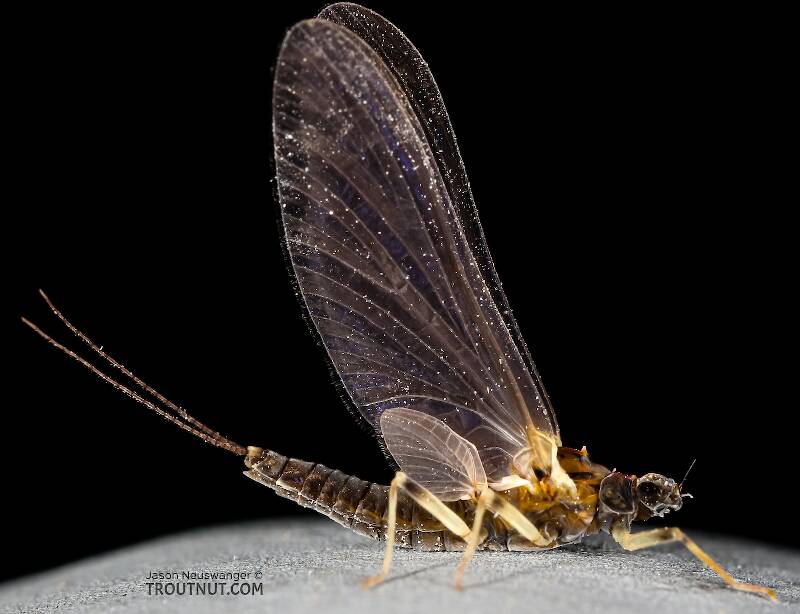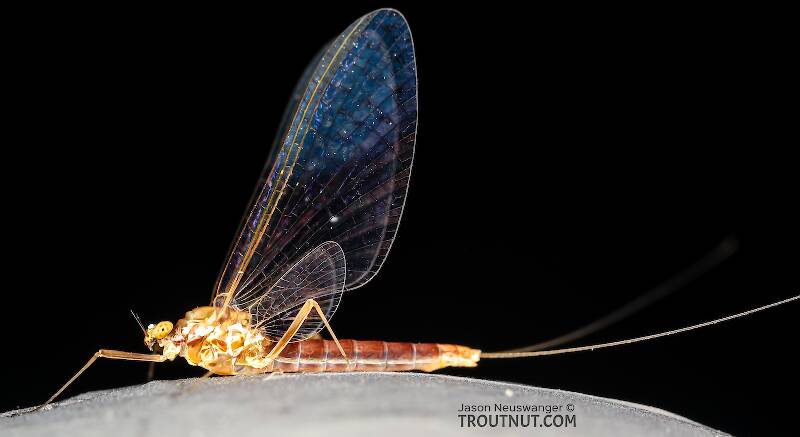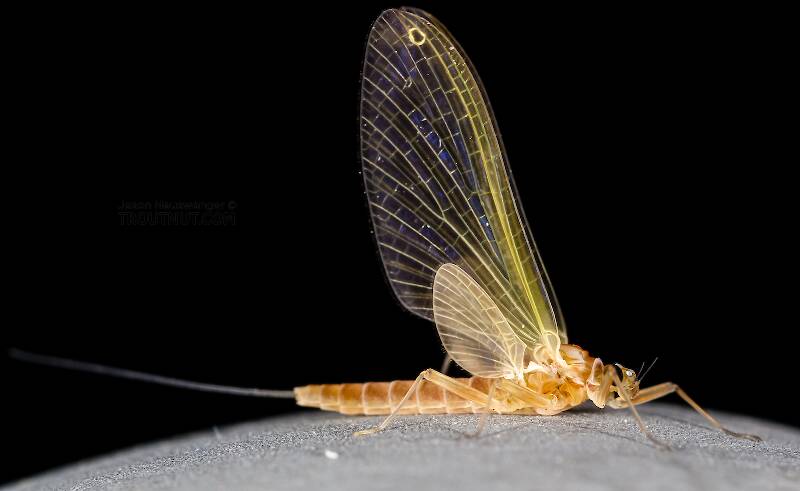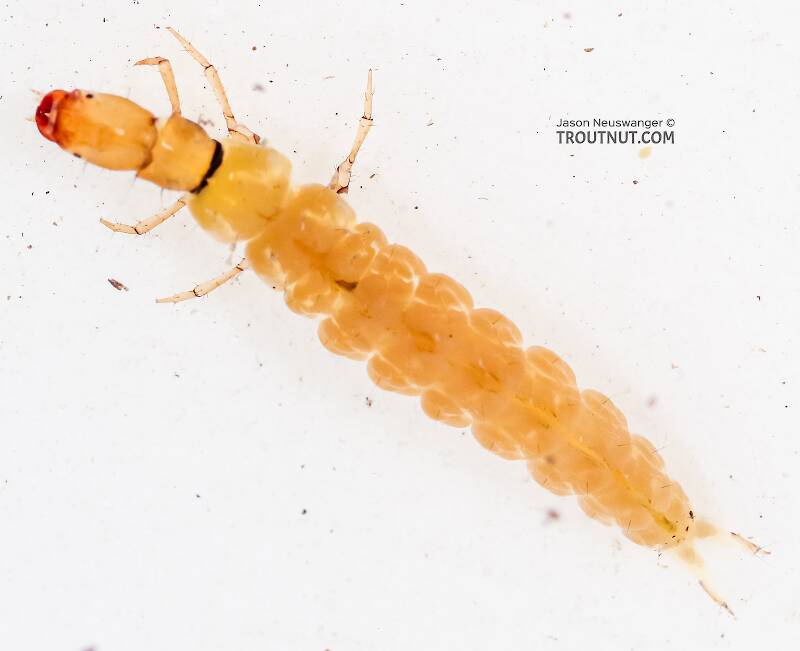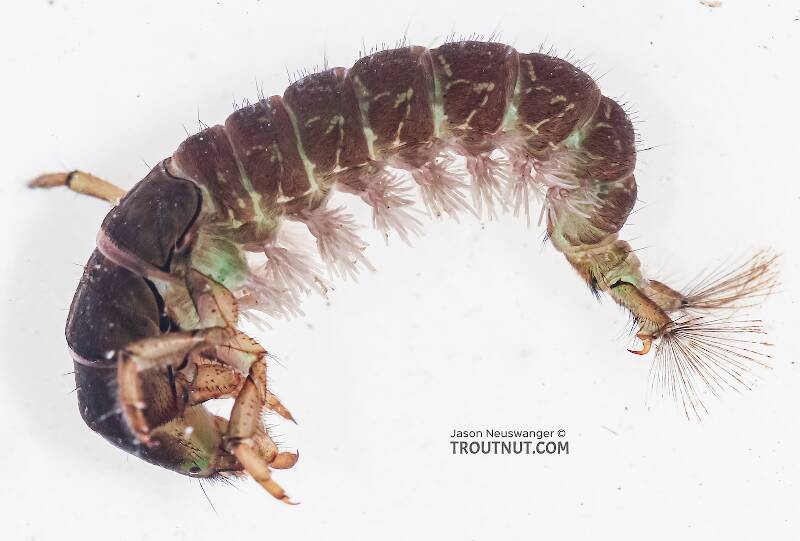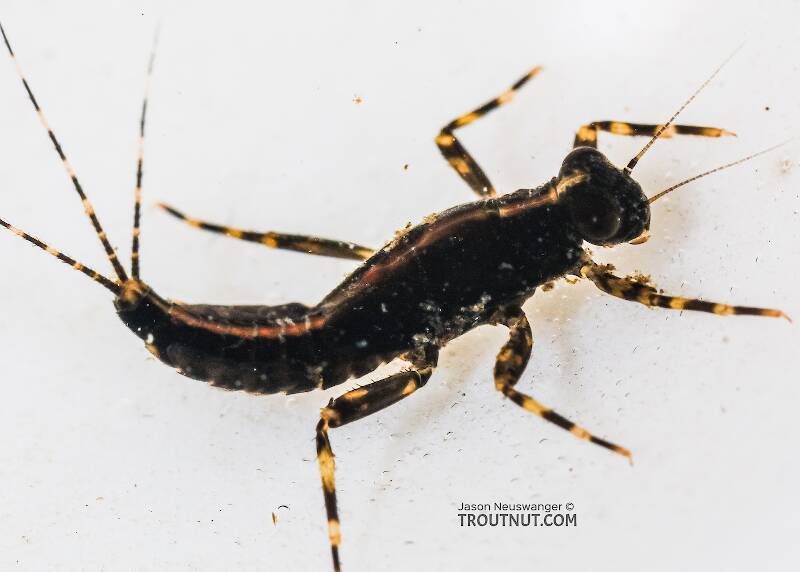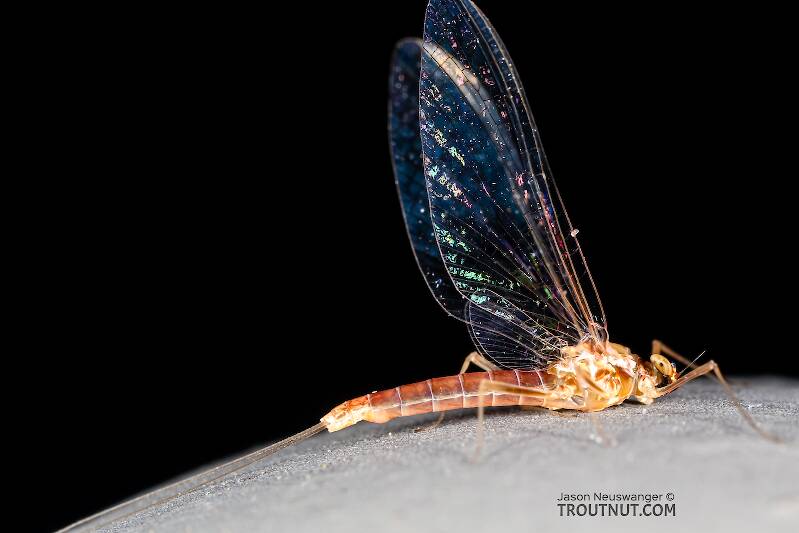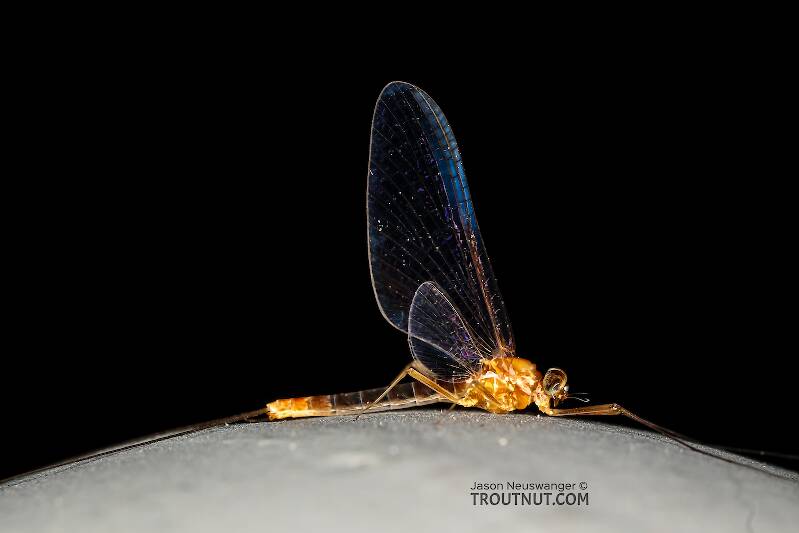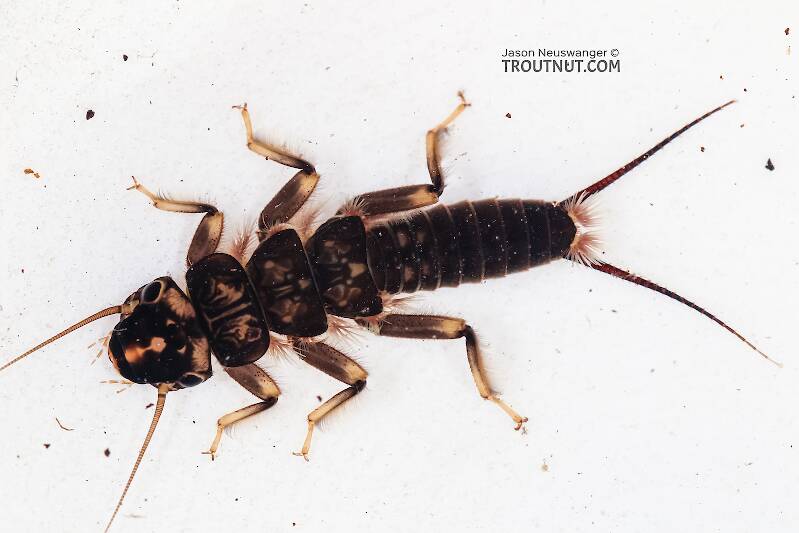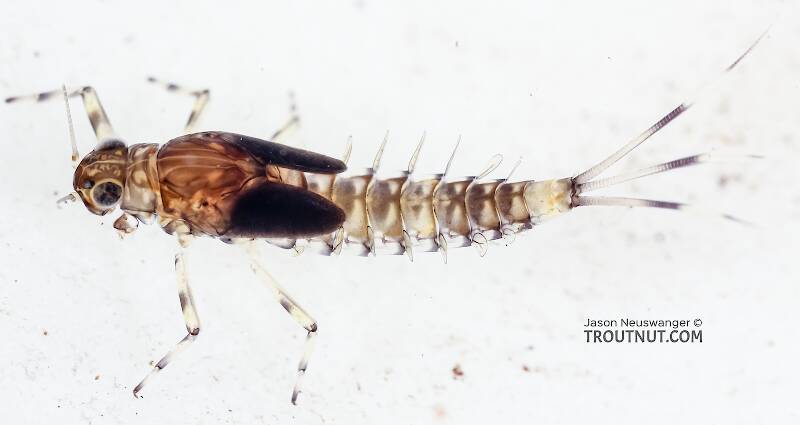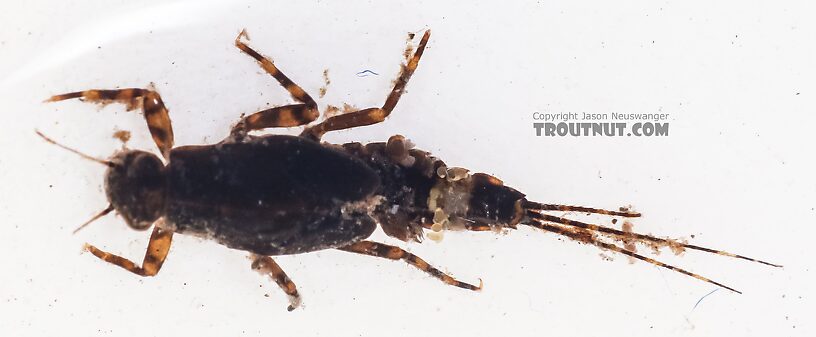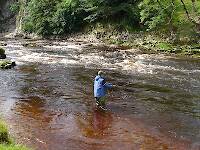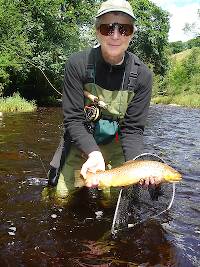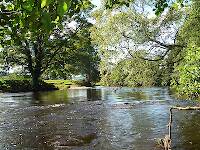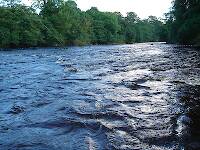
Hex Mayflies
Hexagenia limbata
The famous nocturnal Hex hatch of the Midwest (and a few other lucky locations) stirs to the surface mythically large brown trout that only touch streamers for the rest of the year.
Featured on the forum

This specimen appears to be of the same species as this one collected in the same spot two months earlier. The identification of both is tentative. This one suffered some physical damage before being photographed, too, so the colors aren't totally natural. I was mostly photographing it to test out some new camera setting idea, which worked really well for a couple of closeups.

Troutnut is a project started in 2003 by salmonid ecologist Jason "Troutnut" Neuswanger to help anglers and
fly tyers unabashedly embrace the entomological side of the sport. Learn more about Troutnut or
support the project for an enhanced experience here.
By Troutnut on August 2nd, 2020
I wanted to explore the Copper Basin in Idaho for reasons unrelated to fishing, but I was curious what the rivers held, too. Whitefish are the only native salmonid in this drainage, because the "Big Lost" river gets its name by disappearing into the porous volcanic formations around Craters of the Moon National Monument, remaining disconnected from the rest of the Snake River drainage for a long time.
I started late in the morning fishing the upper East Fork Big Lost River. I caught six little cookie-cutter hatchery rainbows in a pretty piece of spring-fed water, then sampled and photographed bugs. I drove to fish lower on the East Fork Big Lost midday. I caught my first-ever Snake River Finespotted Cutthroat, about 11", and a 14" rainbow. I hooked a strong 17-incher in a picture-perfect hatch-matching scenario, as the fish sipped size 24-ish Baetidae duns along a dark cut bank on an otherwise bright, attractor-fly kind of day. I fought it for 3–4 minutes before the hook came loose.
After that, i drove to check out the North Fork Big Lost River. I caught two more finespots and a 9-inch brookie in pretty water that didn't have a high number of fish.
The next stop was Star Hope Creek, mostly because I like the name. I drove way far up a very narrow two-track road, found a place I could get off the road far enough to park, and went to fish. The creek was so small I could easily hop across it almost anywhere, and it was comically packed with stocked cutthroat. There was no need to read the water, because there was almost no water without fish, even in the most ridiculous places. It seems I stumbled into a spot just below a natural upstream migration barrier, a large beaver dam, above which there were just a few wild brookies and no stocked cutts. There was a heavy hatch of Cinygmula mayflies in the evening.
I started late in the morning fishing the upper East Fork Big Lost River. I caught six little cookie-cutter hatchery rainbows in a pretty piece of spring-fed water, then sampled and photographed bugs. I drove to fish lower on the East Fork Big Lost midday. I caught my first-ever Snake River Finespotted Cutthroat, about 11", and a 14" rainbow. I hooked a strong 17-incher in a picture-perfect hatch-matching scenario, as the fish sipped size 24-ish Baetidae duns along a dark cut bank on an otherwise bright, attractor-fly kind of day. I fought it for 3–4 minutes before the hook came loose.
After that, i drove to check out the North Fork Big Lost River. I caught two more finespots and a 9-inch brookie in pretty water that didn't have a high number of fish.
The next stop was Star Hope Creek, mostly because I like the name. I drove way far up a very narrow two-track road, found a place I could get off the road far enough to park, and went to fish. The creek was so small I could easily hop across it almost anywhere, and it was comically packed with stocked cutthroat. There was no need to read the water, because there was almost no water without fish, even in the most ridiculous places. It seems I stumbled into a spot just below a natural upstream migration barrier, a large beaver dam, above which there were just a few wild brookies and no stocked cutts. There was a heavy hatch of Cinygmula mayflies in the evening.
Photos by Troutnut from the North Fork Big Lost River, Star Hope Creek, and the East Fork Big Lost River in Idaho
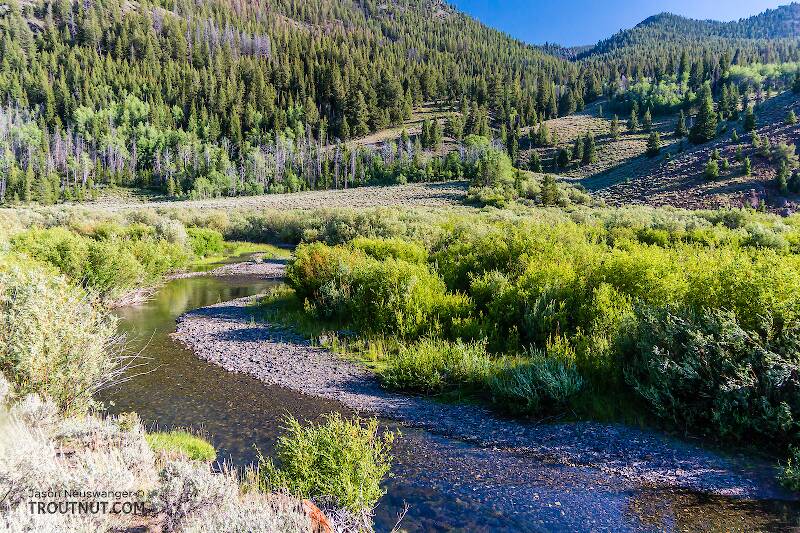
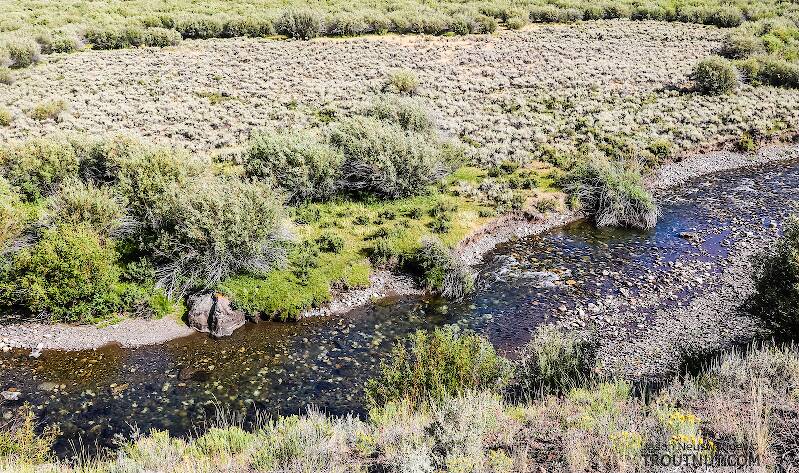
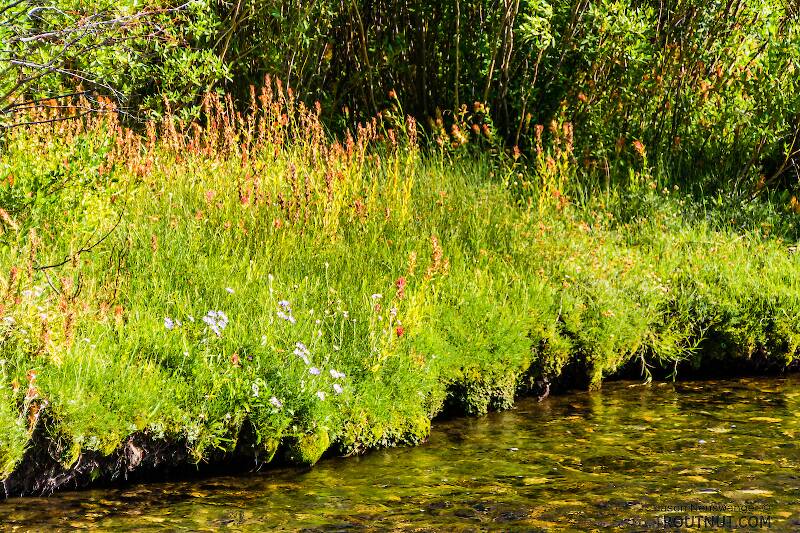
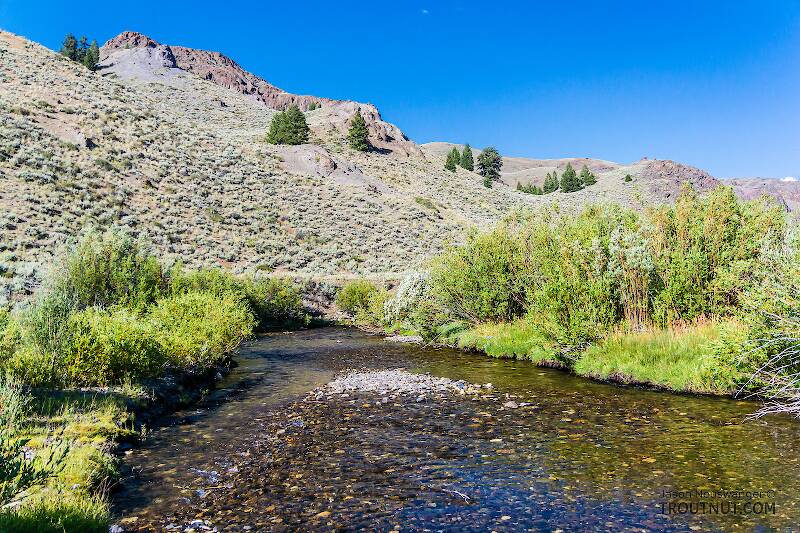
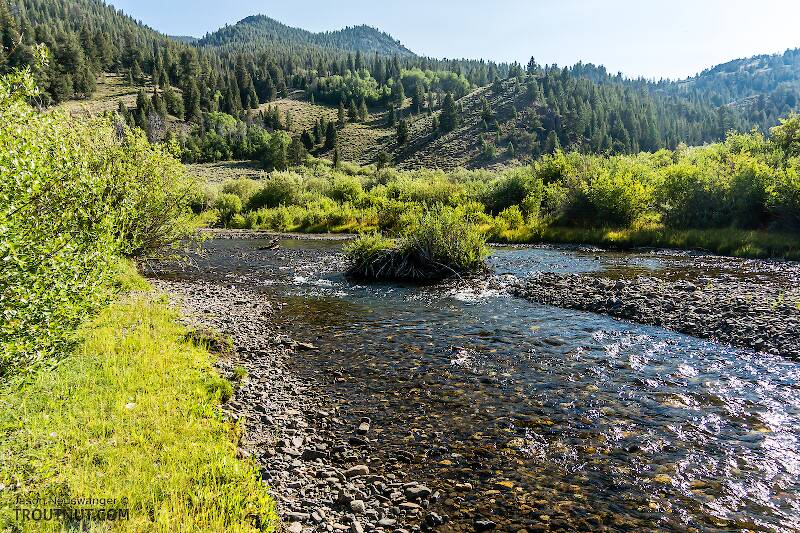
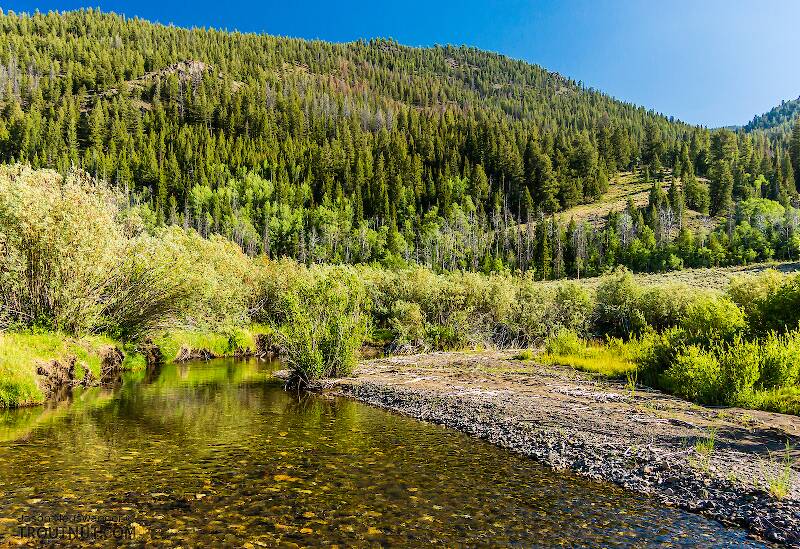
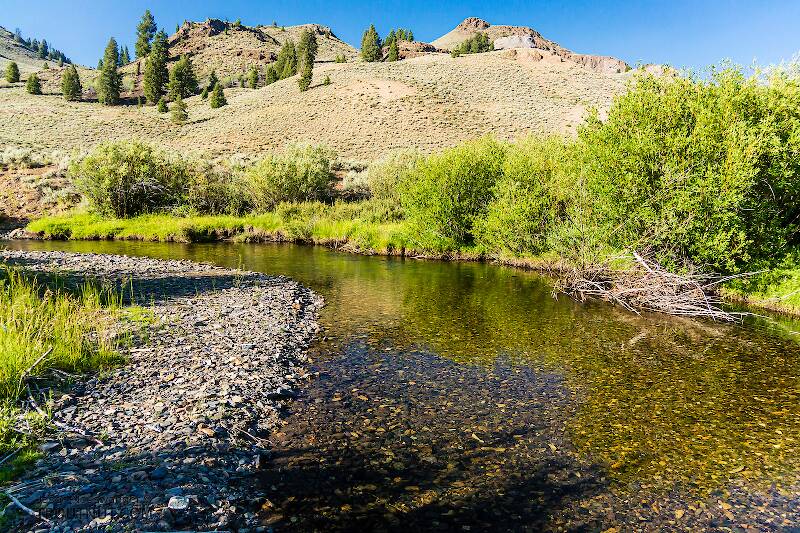
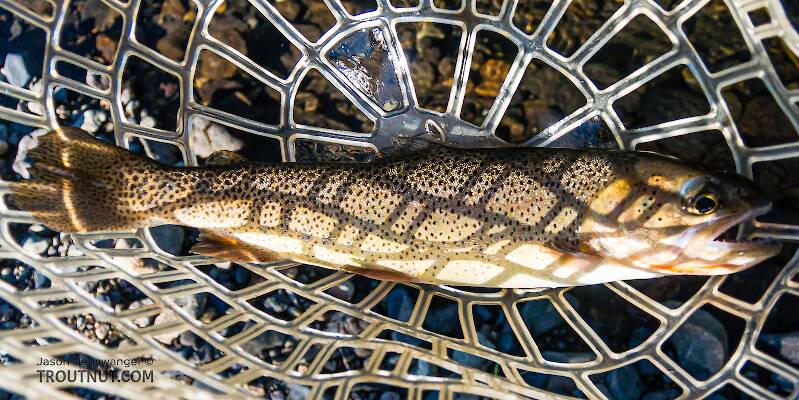
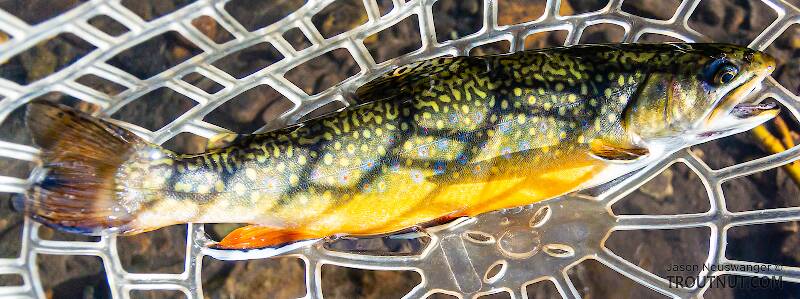
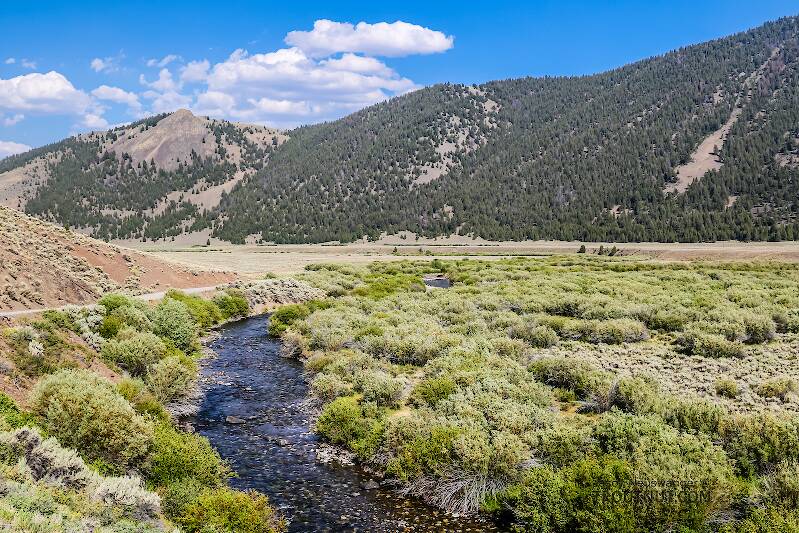
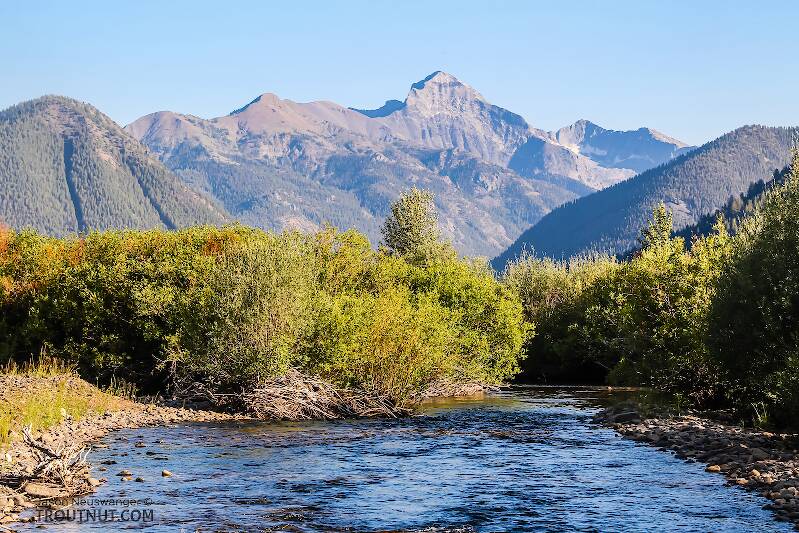
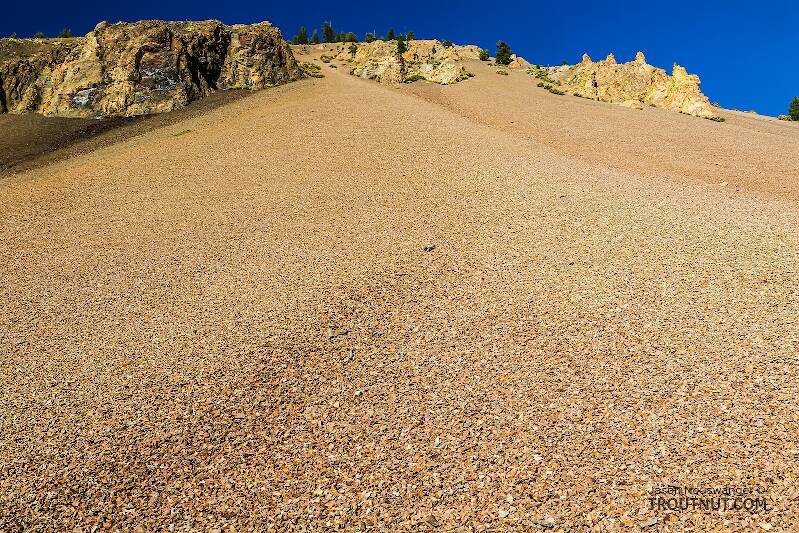
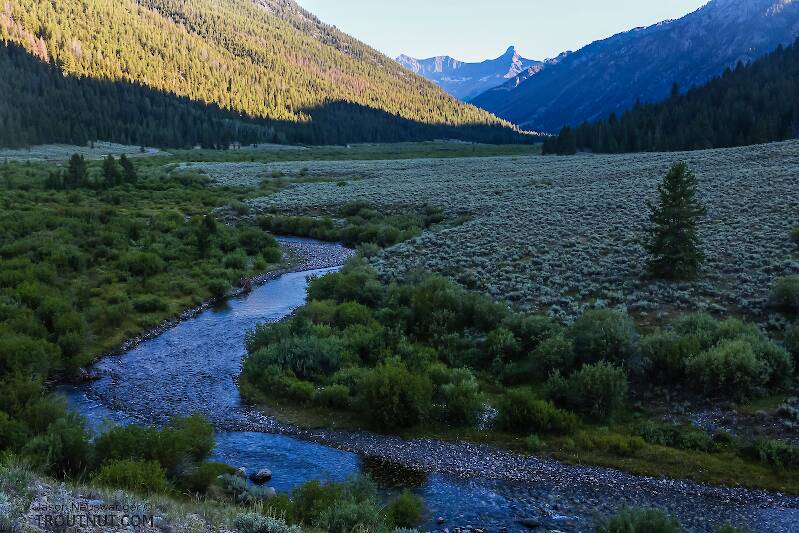
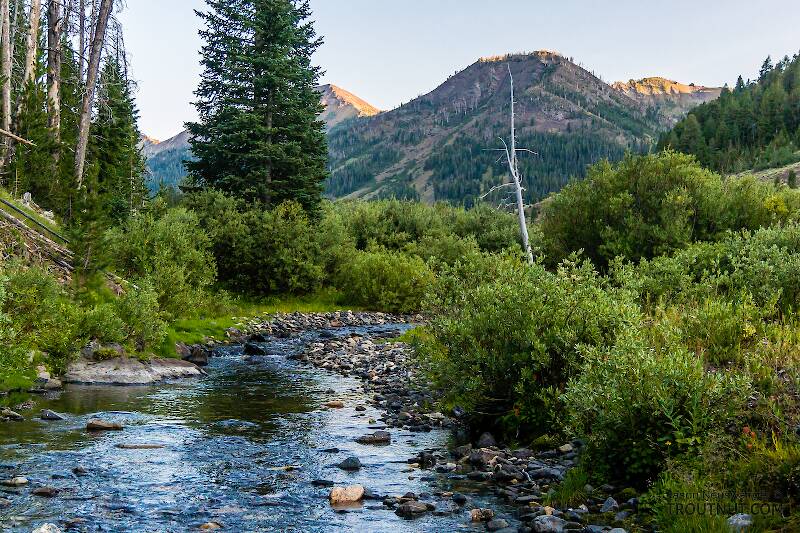
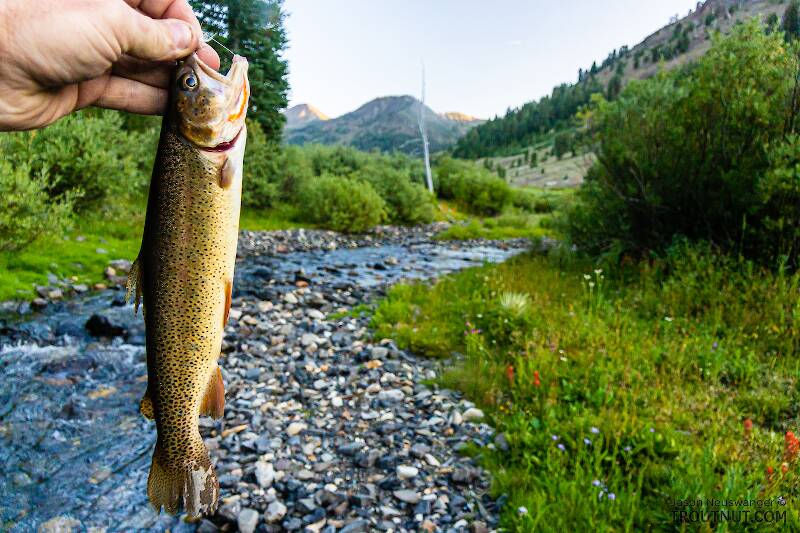
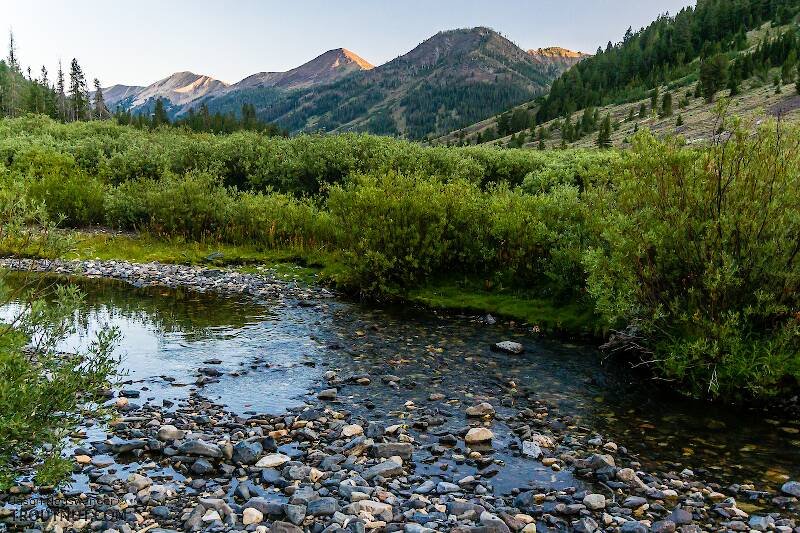
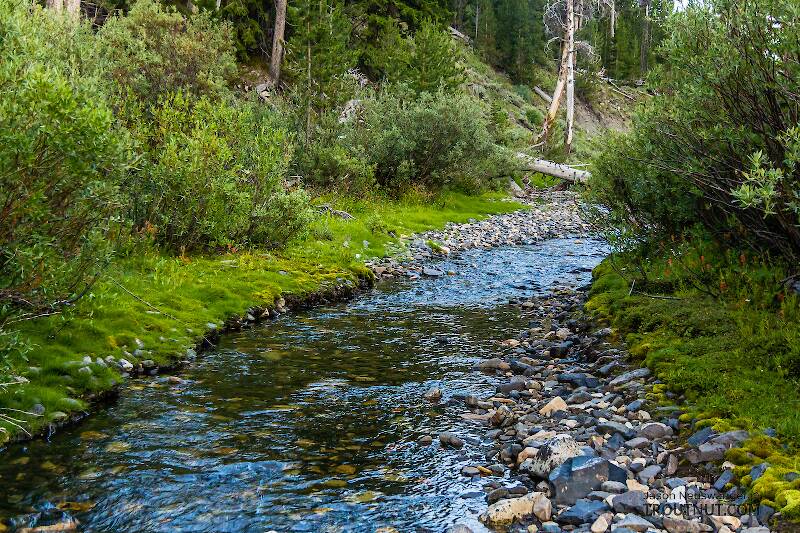
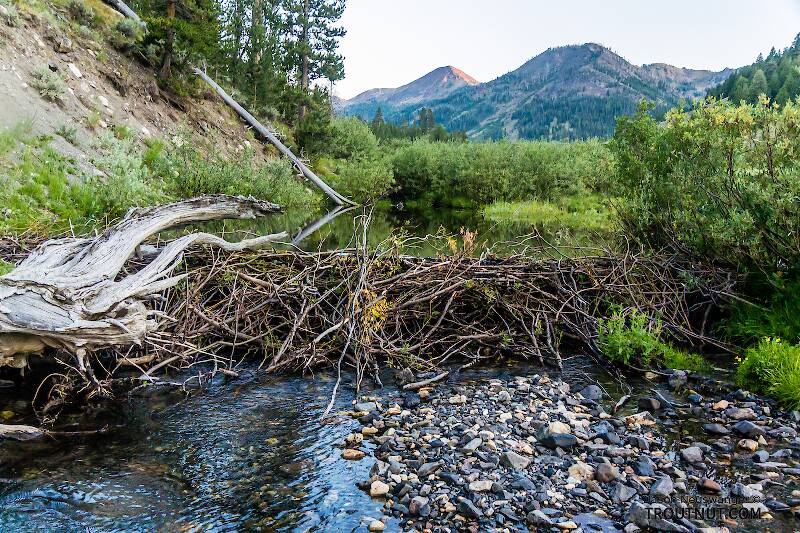
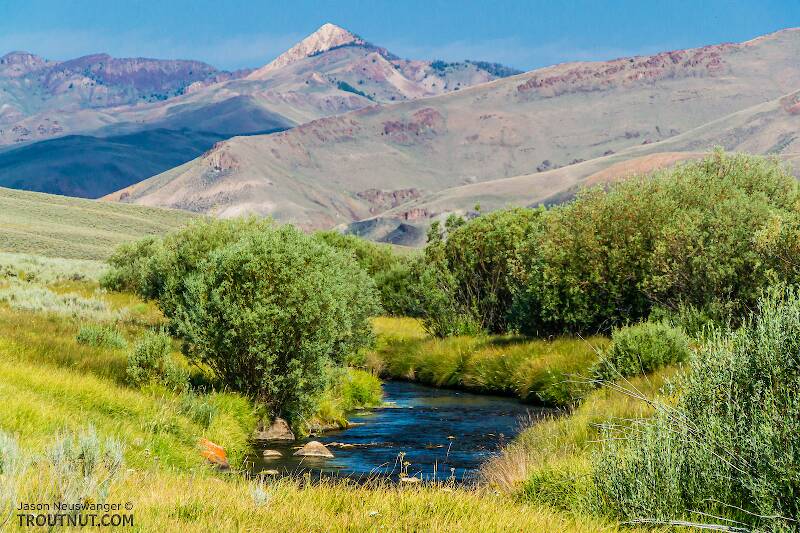
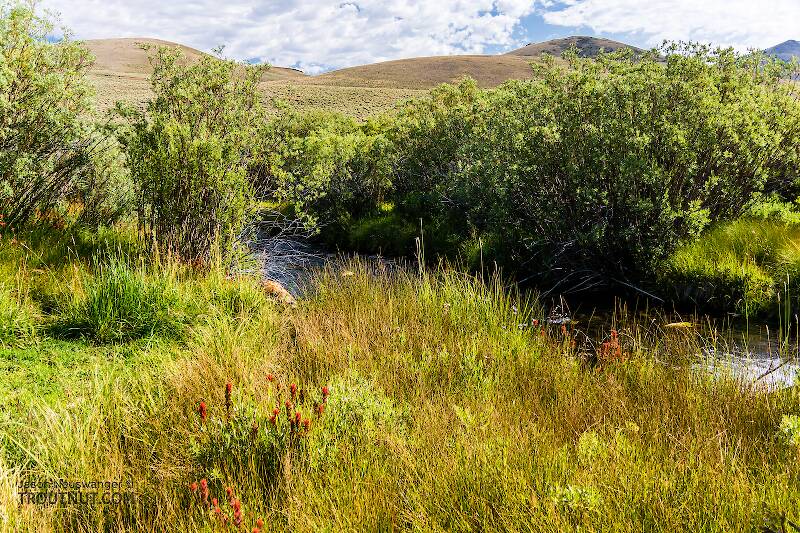
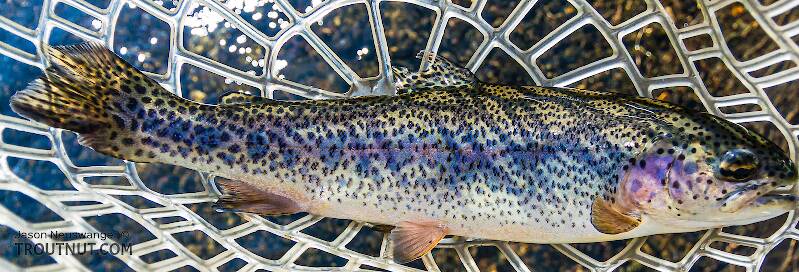
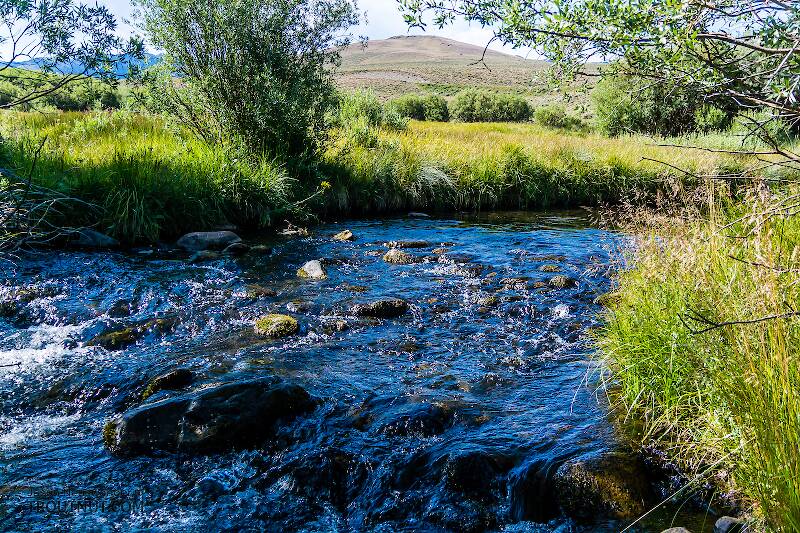
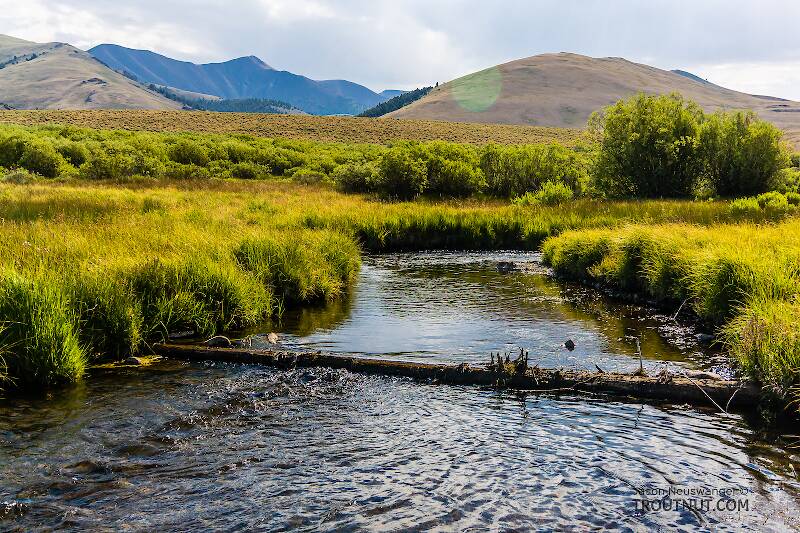
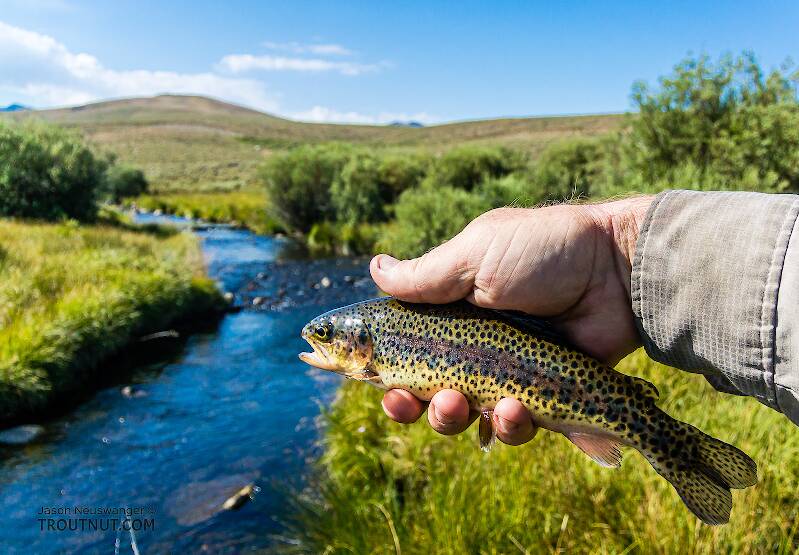
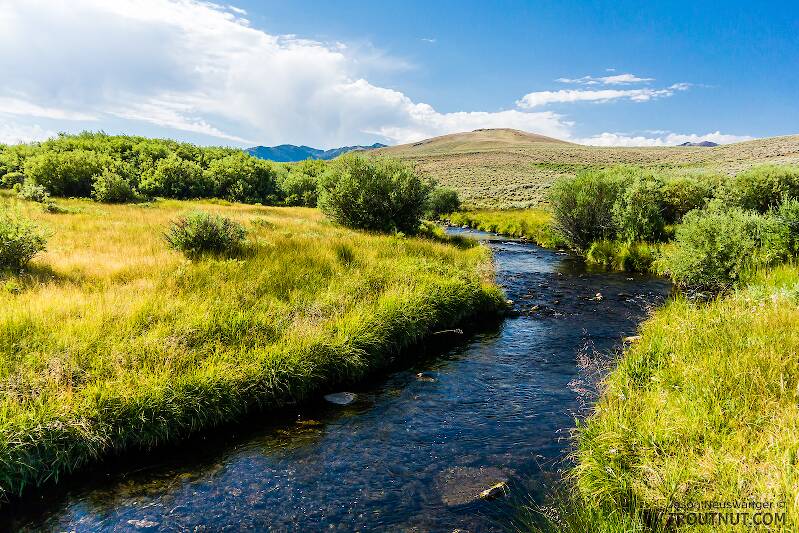
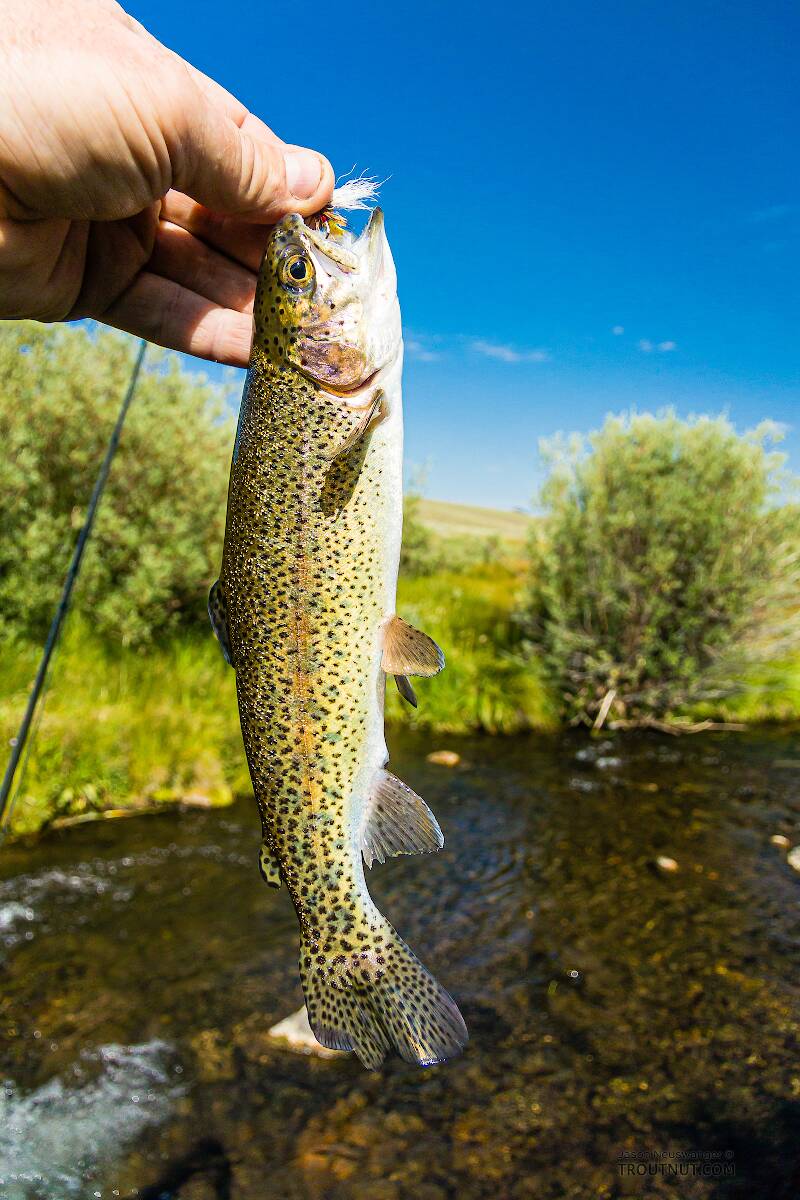

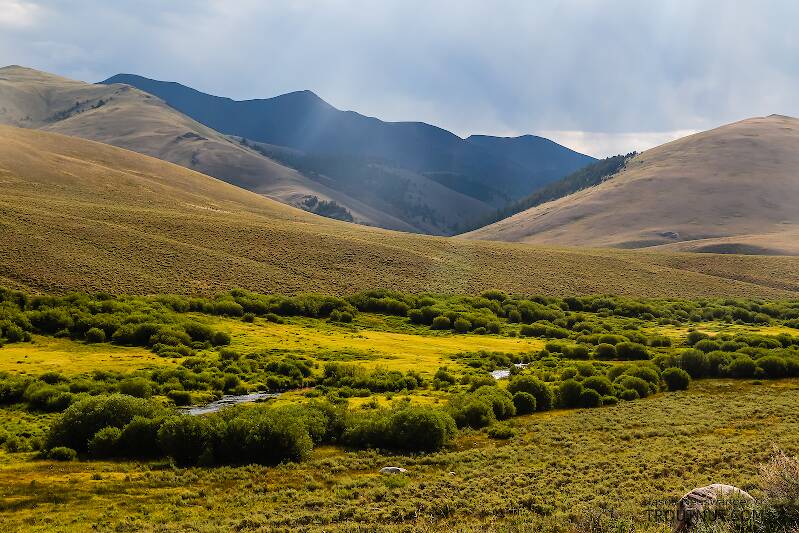
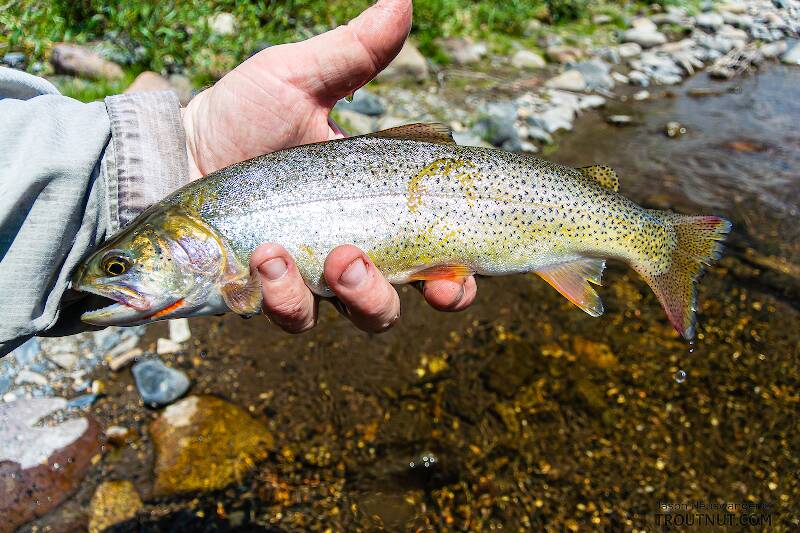
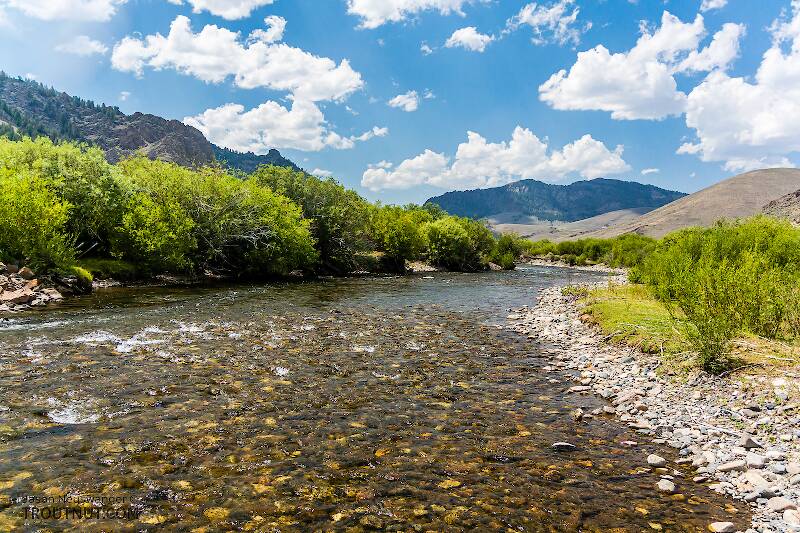
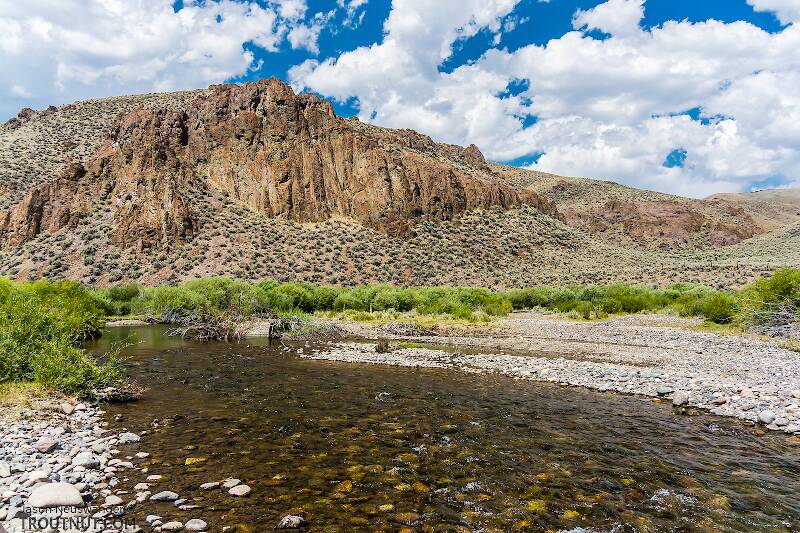
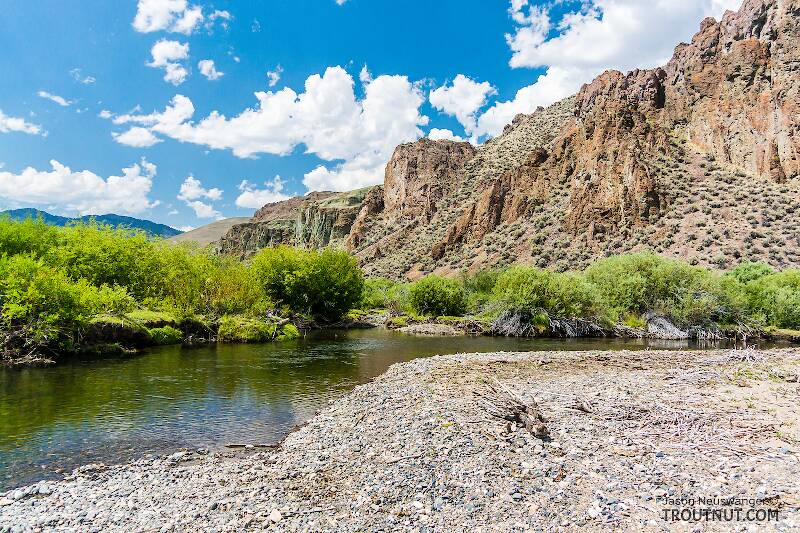
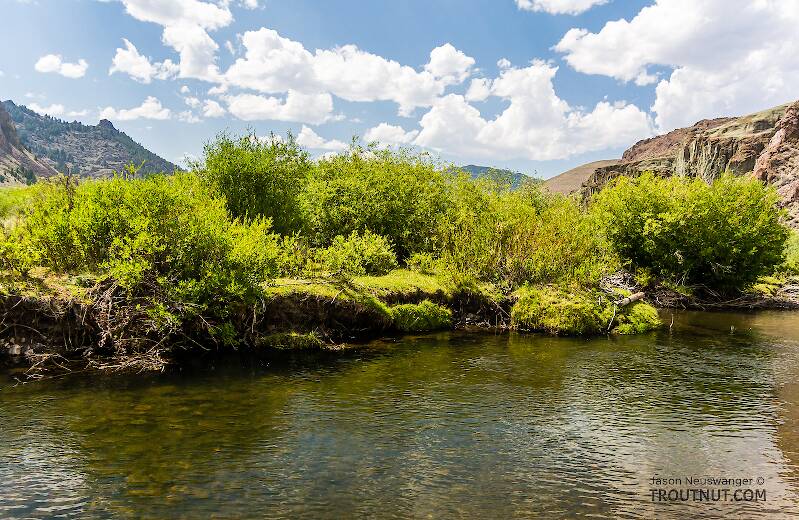
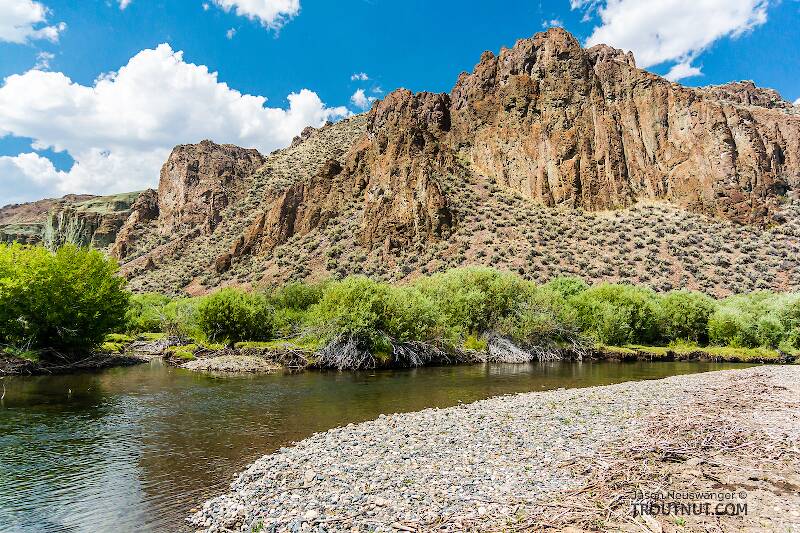
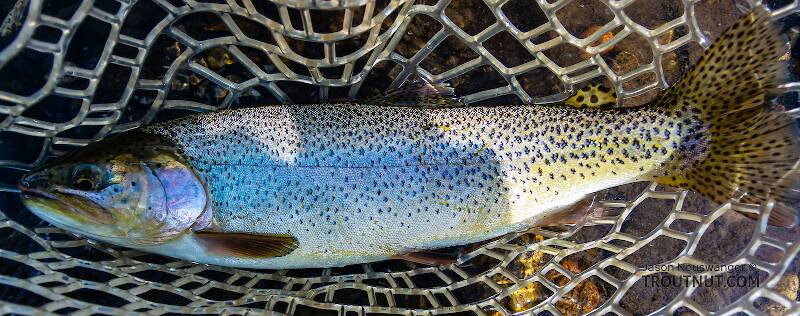
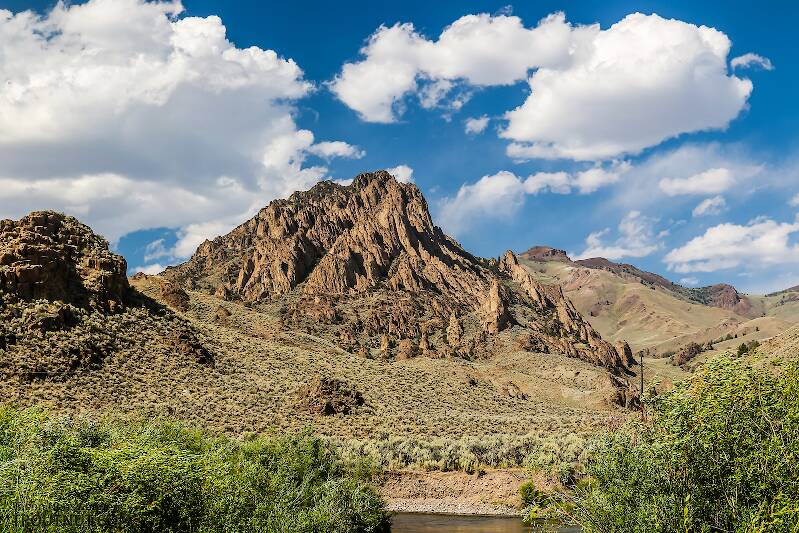
Closeup insects by Troutnut from the East Fork Big Lost River and Star Hope Creek in Idaho
Quick Reply
Related Discussions
Topic
Replies
Last Reply
1
Mar 15, 2009
by Martinlf
by Martinlf
12
Apr 27, 2015
by Patroutbum
by Patroutbum

